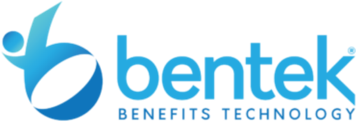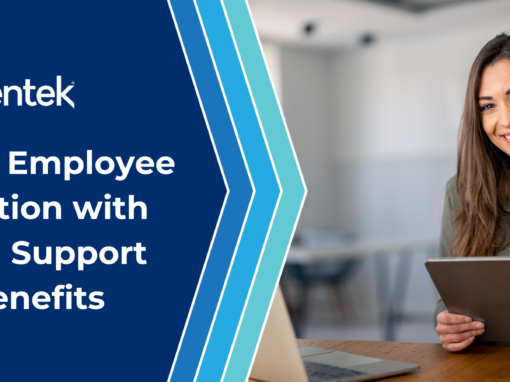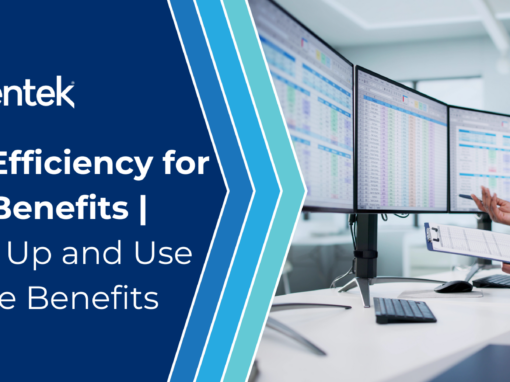Did you know that significant life events such as marriage, childbirth, relocation, or retirement can be some of the most transformative periods in an employee’s life, especially in how they affect public sector benefits? These milestones require swift and meticulous adjustments to an employee’s benefits package to ensure their needs and those of their dependents are adequately met. However, the complexity and labor-intensive nature of managing these changes can be a daunting challenge for HR teams. This is especially true within the public sector, where adherence to stringent policies and compliance with regulations such as the Affordable Care Act (ACA) and the Family and Medical Leave Act (FMLA) is non-negotiable.
Enter the arena of automated life event management: a beacon of efficiency in the complex labyrinth of HR responsibilities. This innovative approach not only promises to streamline these processes but also ensures that employees receive the support they need during these pivotal life transitions. In doing so, it maintains a delicate balance between operational efficiency and strict compliance with regulatory standards.
Why is this transformation so critical for HR teams in the public sector? The answer lies in the intricate details of managing employee benefits adjustments automation, a task that, if not handled correctly, can lead to dissatisfaction, penalties for non-compliance, and a significant administrative burden. Automated HR life event management emerges as a compelling solution, offering streamlined life event management for HR through:
- Prompt adjustments to benefits in response to life events.
- Minimized risk of human error and non-compliance.
- Enhanced employee satisfaction through efficient and accurate handling of benefit changes.
But how exactly can public sector organizations implement these automated solutions, and what are the best practices to follow? Read along as we dive deeper into the transformative potential of automated life event management, exploring its impact on public sector employees and HR teams alike. Are you ready to navigate the future of public sector employee benefits automation?
The Impact of Life Events on Public Sector Employees and HR Teams
Life events carry profound implications for public sector employees, necessitating a meticulous adjustment of benefits to accommodate new circumstances. These changes, governed by an intricate web of policies and regulations, underscore the vital role of HR departments in navigating these transitions effectively.
Let’s explore the specific life events and their impact on benefits coverage, the administrative challenges they pose, and the dire need for streamlined management solutions.
Specific Life Events and Their Implications on Benefits
- Marriage or Domestic Partnership: This event often requires additions to health insurance plans, changes to beneficiary designations, and adjustments to tax withholdings. Public sector employees may need to update their marital status to ensure their spouse or partner gains access to health, dental, or vision benefits.
- Childbirth or Adoption: Introduces the need for adding dependents to health plans, possibly changing plans to accommodate the new family member, and initiating or adjusting life insurance coverage. It may also trigger eligibility for parental leave benefits.
- Relocation: Employees moving to new geographic locations might face changes in health care provider networks, necessitating shifts in their health insurance plans. Relocation can also affect eligibility for certain local or state-specific benefits.
- Retirement: Transitioning into retirement involves significant alterations, such as enrolling in retirement health benefits, adjusting pension plans, and navigating Medicare eligibility.
Each of these life events not only impacts the employee’s benefits needs but also places a considerable burden on HR departments to manage these changes efficiently and compliantly.
The Administrative Burden and Compliance Challenges
The manual management of life events presents several challenges for HR departments:
- Time-Consuming Processes: Manual adjustments to benefits, data entry, and communications with employees can be incredibly labor-intensive, diverting HR professionals from strategic initiatives.
- Risk of Human Error: The complex nature of benefits adjustments, coupled with the volume of changes in large public sector organizations, increases the likelihood of errors, which can lead to benefits issues for employees and compliance violations.
- Evolving Regulations: Keeping up with changes in federal laws like ACA and FMLA, as well as state and local regulations, requires constant vigilance. Failure to comply can result in penalties and legal issues.
These challenges underscore the necessity for HR departments to seek more efficient, accurate, and compliant methods for managing life events.
Frequency of Life Events and Cost Implications
Data collected from public sector organizations highlights the frequent occurrence of life events and their associated costs:
- High Frequency of Life Events: Public sector employees experience life events at a rate consistent with the general population. However, the sheer size of the public sector workforce amplifies the administrative effort required to manage these events.
- Cost of Manual Management: The financial impact of manually managing life events extends beyond the direct cost of staff time. It includes potential penalties for non-compliance, the cost of rectifying errors, and inefficiencies that divert resources from other priorities.
Emphasizing Risk of Non-Compliance and Employee Dissatisfaction: The stakes for public sector HR departments in managing life events efficiently are high. Inadequate or delayed adjustments can lead to employee dissatisfaction, affecting morale and retention. Moreover, non-compliance with regulations risks financial penalties and damage to the organization’s reputation.
The intersection of these factors — specific life events, the administrative burden they create, and the risks associated with manual management — clearly illustrates the critical need for automated solutions in the public sector. By embracing automation, HR departments can not only alleviate these burdens but also improve accuracy, ensure compliance, and enhance employee satisfaction, thus supporting both operational objectives and the well-being of the workforce during significant life transitions.
Utilizing Automation for Streamlined Life Event Management
According to Mercer, 46% of organizations are automating their benefits administration processes, with an additional 26% planning to do so within the next two to three years. For public sector HR and Benefits teams, the advent of automation has heralded a new age of efficiency and compliance, particularly in the management of life events and their impact on employee benefits.
This section delves into how automation serves as a linchpin for HR departments, transforming the landscape of life event management through innovative solutions.
Automation of Policy Adjustments
Automated HR life event management systems play a critical role in updating benefits coverage seamlessly and instantaneously in response to life event notifications. This negates the need for manual data entry, thereby:
- Reducing the potential for human error: Automated systems ensure that benefits adjustments are made accurately, reflecting the correct changes as per the life event reported.
- Speeding up the process: Changes to benefits coverage happen in real time, ensuring employees receive timely support during significant life transitions.
- Ensuring consistency: Each policy adjustment follows predefined rules, ensuring consistent application across the board.
Direct Communication with Employees
Automation fosters an environment of clear and direct communication between HR departments and employees. Automated systems can:
- Notify employees of required actions: As soon as a life event is reported, employees receive notifications about the next steps, documents needed, and deadlines for submitting changes.
- Provide updates on status: Employees can track the progress of their benefits changes requests, giving them peace of mind during times of transition.
- Offer guidance and support: Automated messages can include links to resources or contact details for HR representatives, ensuring employees have access to support when needed.
Ensuring Data Accuracy and Regulatory Compliance
The accuracy of data is paramount, and automated life event management systems excel in maintaining precise records while ensuring compliance with regulatory requirements. These systems:
- Track changes meticulously: Every adjustment is logged, providing a clear audit trail for compliance purposes.
- Generate compliance reports: Automated tools can produce reports required for regulatory compliance, including ACA and FMLA, streamlining the audit process.
- Update policies automatically: As laws and regulations change, the system can be updated to reflect these changes, ensuring ongoing compliance.
Benefits of Self-Service Portals
Self-service portals represent a significant leap forward in empowering employees to manage their benefits. These portals allow employees to:
- Report life events at their convenience: Employees can log in and report life events without having to wait for HR office hours.
- Select new benefits options: Following a life event, employees can review and choose new benefits packages suited to their new circumstances.
- Submit documentation online: Required documents can be uploaded through the portal, simplifying the documentation process.
The Critical Role of Automated Life Event Management
Streamlined Operations and Enhanced Efficiency
- Automated life event management solutions significantly reduce the time and effort required by HR teams to process changes related to employee benefits. This efficiency stems from the elimination of manual data entry and the consequent reduction in errors, leading to a more streamlined operation.
- The adoption of automation allows for real-time updates to employee benefits in response to life events, ensuring timely support for employees when they need it most. This responsiveness enhances the overall employee experience, promoting a positive workplace culture.
Ensuring Compliance and Accuracy
- Regulatory compliance remains a top priority for public sector HR departments. Automated systems are designed to stay current with changing laws and regulations, such as the ACA and FMLA, thereby mitigating the risk of non-compliance and potential penalties.
- The precision of automated systems in recording and managing data not only supports compliance efforts but also ensures the accuracy of employee records. Accurate data is crucial for making informed decisions and for maintaining trust between employees and HR departments.
Employee Satisfaction and Engagement
- By empowering employees with self-service portals, automated life event management solutions directly contribute to increased employee satisfaction. These portals offer convenience and control, allowing employees to manage their benefits with ease and confidence.
- The transparency and efficiency provided by automation enhance the employee experience during critical life transitions, fostering a sense of support and understanding from the employer. This, in turn, can lead to higher levels of engagement and loyalty among employees.
The undeniable benefits of automated life event management solutions for public sector HR departments call for action. HR leaders should consider these systems not just as tools for operational efficiency but as strategic investments in the well-being of their workforce and the fulfillment of regulatory obligations.
Adopting such technologies is a forward-thinking move that aligns with the goals of modern, responsive, and efficient public sector organizations. Embracing automation in HR practices offers a pathway to achieving these objectives while also enhancing the employee experience during life’s significant transitions.
For more articles like this, check out the Bentek Blog!




